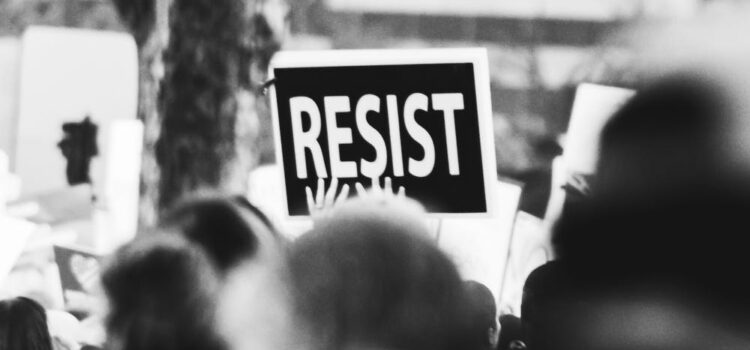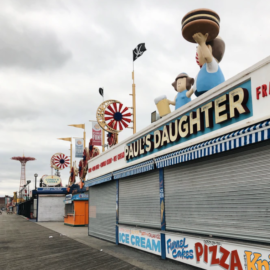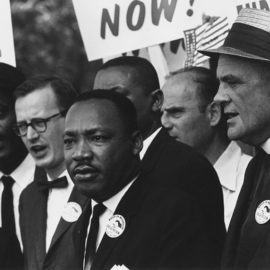

This article is an excerpt from the Shortform book guide to "Lost Connections" by Johann Hari. Shortform has the world's best summaries and analyses of books you should be reading.
Like this article? Sign up for a free trial here .
What triggered the Kotti Berlin protest? Why was the role of the community so important?
The Kotti Berlin protest was triggered when an elderly Turkish-German woman (Nuriye Cengiz) living in the neighborhood contemplated committing suicide because she couldn’t afford the most recent rent increase. The Kotti community rallied behind her and formed a protest camp to fight against the rent hikes and evictions. The role of the community was crucial in preventing her from committing suicide because she found support in her community.
Read on to learn more about how the Kotti Berlin protest teaches us the importance of community support in preventing despair and depression.
Case Study: The Kotti Berlin Protest
The Kotti neighborhood was once a West Berlin peninsula bordered on three sides by the Berlin Wall. Being nearly surrounded by Soviet-controlled East Berlin terrified local residents and led to a mass exodus from the area. By 2011, Kotti was almost solely populated by people who faced ostracism in other parts of Berlin—Turkish immigrants, left-wing activists, and gay people. These radically different groups made uneasy neighbors and were deeply distrustful of one another.
Hari jokingly refers to Kotti as “Berlin’s Bronx” because of the proliferation of housing projects. But after the Berlin Wall came down and the threat of Soviet invasion passed, the rock bottom property values in Kotti began to skyrocket as developers snatched up the now-safe available real estate. The cost of rent rose dramatically until most residents were spending more than half their monthly income on rent alone.
In the midst of this chaos, an elderly Turkish-German woman (Nuriye Cengiz) living in Kotti was facing eviction because she couldn’t afford the most recent rent increase. As an elderly, disabled immigrant with no close family nearby, Nuriye had nowhere else to go and felt that suicide was her only option. She hung a note in her window explaining to her neighbors that she intended to kill herself before the police arrived to forcibly remove her.
For the first time, her neighbors began to reach out. They empathized with Nuriye’s despair—the endless rent increases were slowly pushing them to their limits, too. No one recommended that Nuriye see a psychiatrist because they understood that despair was a reasonable reaction to the circumstances they were all facing. That part is crucial: Kotti residents recognized that their shared depression was a collective issue, not an individual one.
In response to Nuriye’s announcement, the Kotti Berlin protest was set in motion when neighbors reached across the ideological divide between them and decided to fight back against the rent hikes and evictions. They formed a makeshift protest camp and blocked a major street. The residents each took shifts to keep the Kotti Berlin protest alive and to prevent the police from tearing down their protest camp overnight, working in randomly assigned pairs. The Kotti Berlin Protest was a made up of residents from varied backgrounds and beliefs, elderly Muslims teamed up with single mothers in mini skirts while teenage punks paired with retired Communists—all under an umbrella donated by a local gay bar. Nuriye became the center of a strong community of people who genuinely cared for one another. She no longer felt that she had to face her problems alone, and her depression and suicidality began to heal.
A Model for Communal Care
After decades of living just steps away from each other but never interacting, the residents of Kotti reconnected under a common purpose. When they welcomed a homeless protester named Tuncai into the community, residents brought him food and clothing—in return, Tuncai kept the camp spotless and gave out encouraging hugs.
Eventually, the owner of the gay bar hired Tuncai in a paid position. Unfortunately, this stability didn’t last. Tuncai’s go-to solution for anyone who seemed unhappy was to hug them—so when police officers showed up to the camp and appeared to get angry, Tuncai tried to hug an officer and was immediately arrested.
The organizers of the Kotti Berlin protest immediately rallied to find Tuncai and bring him back. When the police refused to give them any information, the residents tracked Tuncai down on their own. They discovered that he’d been locked up in a psychiatric institution, and that he’d spent much of his life in similar institutions before escaping and becoming part of the Kotti community.
For eight solid weeks, huge groups of residents consistently stormed the offices of the facility holding Tuncai to demand his release while others put together official petitions and gathered signatures. The Berlin authorities had never seen that kind of dedication—most people in the facility didn’t have a strong social network to fight for them.
Eventually, the authorities agreed to release Tuncai on the condition that he had a job and a place to live. The community signed off on these demands easily, but they saw them as only the first, tiny step: What Tuncai needed most was the type of community the Kotti residents had found through their protests. He needed a group of people who genuinely cared about him to act as a safety net.
The Kotti protesters’ efforts to free Tuncai are a model for the type of social connections we all need in order to thrive. Before the protests, Tuncai was homeless both physically and emotionally: He had no safe place to live, and no one to make meaningful connections with. Like Nuriye, his situation was a pressure cooker for depression, but what he needed wasn’t a prescription: Instead, he needed basic shelter, a secure source of food, and a place to belong. If every depressed person had those basic necessities, our cultural approach to chemical antidepressants would change drastically.

———End of Preview———
Like what you just read? Read the rest of the world's best book summary and analysis of Johann Hari's "Lost Connections" at Shortform .
Here's what you'll find in our full Lost Connections summary :
- The psychological and social factors that contribute to mental illness
- The history of antidepressants and the science behind them
- Why Amish people hardly ever get depressed






